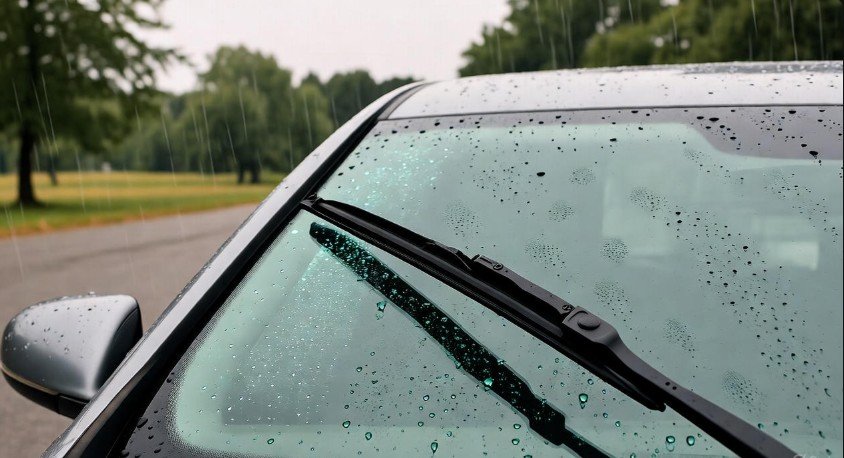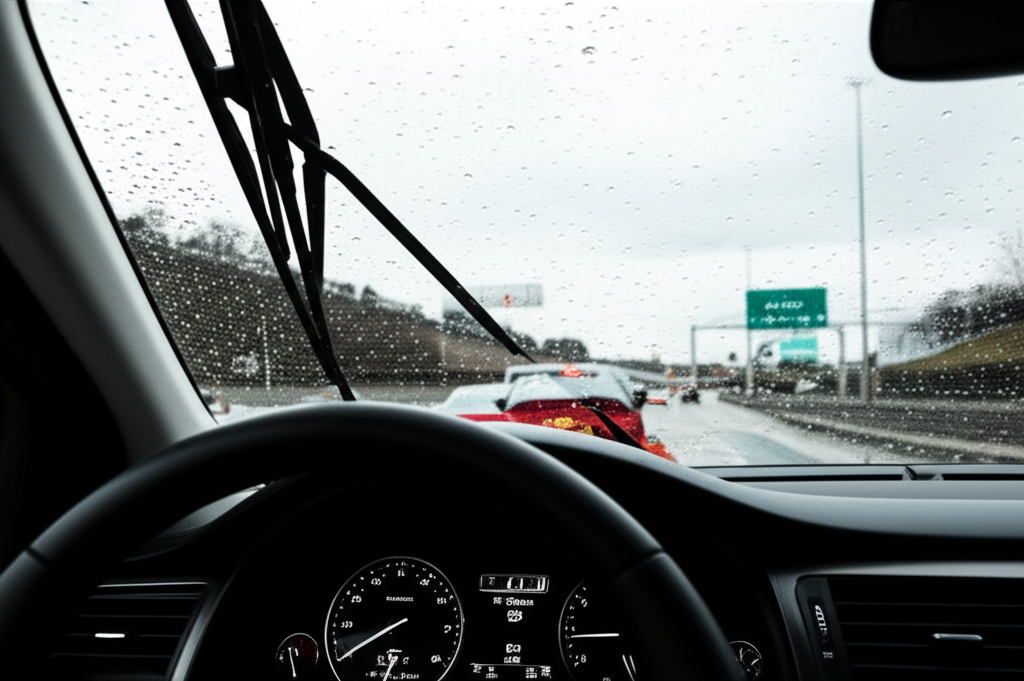5 Rain Sensing Automatic Car Wiper Benefits You’ll Love

Discover the 5 Rain Sensing Automatic Car Wiper Benefits You’ll Love for effortless driving and enhanced safety on any wet road.
Key Takeaways
- Enhance driving safety automatically.
- Reduce Wiper wear and tear.
- Improve visibility instantly.
- Experience convenient operation.
- Save time and focus on the road.
Navigating through a sudden downpour can be a frustrating, and sometimes dangerous, experience for any driver. You might be fumbling for the wiper controls, unsure of the right speed, or constantly adjusting them manually. This is where the magic of rain sensing automatic car wipers comes in. These clever systems are designed to take the guesswork out of driving in the rain, offering a seamless and safer experience. If you’re curious about how this technology works or if it’s worth considering for your vehicle, you’ve come to the right place. We’ll break down the top 5 rain sensing automatic car wiper benefits you’ll love, making your drives smoother and more secure. Let’s explore how this innovation can transform your rainy day commutes.
Understanding Rain Sensing Automatic Car Wipers
Before we dive into the benefits, it’s helpful to understand what rain sensing automatic car wipers are. At their core, these systems use a small sensor, typically mounted on the windshield near the rearview mirror. This sensor uses infrared light to detect the presence and intensity of water on the glass. When raindrops hit the windshield, they disrupt the infrared light. The sensor measures how much light is reflected or refracted and sends this data to a control module. This module then automatically activates the windshield wipers and adjusts their speed based on the amount of rain detected. Some advanced systems can even adjust the wiper interval and sensitivity. This technology is a fantastic example of how automotive innovation prioritizes driver convenience and safety, much like advanced driver-assistance systems (ADAS) found in many modern vehicles.
The primary goal of this technology is to provide optimal windshield clearing without driver intervention, allowing you to maintain focus on the road, traffic conditions, and potential hazards. It’s a subtle yet incredibly impactful feature that enhances the driving experience, especially for those who frequently encounter unpredictable weather patterns.
1. Enhanced Driving Safety in Wet Conditions

One of the most significant benefits of rain sensing automatic car wipers is the immediate and consistent enhancement of driving safety. When rain begins to fall, your visibility can decrease rapidly. Manually adjusting your wipers takes your attention away from the road, even if only for a second. Automatic wipers eliminate this distraction by activating the moment water is detected.
The system’s ability to instantly respond to varying rainfall intensity is crucial. Light drizzle might require a slow, intermittent sweep, while a heavy downpour demands faster, continuous wiping. Rain sensing wipers can dynamically adjust their speed, ensuring your windshield is always clear enough to see. This continuous, appropriate clearing of the windshield dramatically reduces the risk of accidents caused by poor visibility. According to the U.S. Department of Transportation’s Federal Highway Administration, wet roads can double the risk of crashes.
Consider a scenario where you’re driving on a highway, and a sudden cloudburst occurs. Without automatic wipers, you’d have to reach for your wiper stalk, find the right setting, and then hope it’s adequate. During this time, you might miss a braking vehicle or a slippery patch of road. With rain sensing wipers, the moment the first drops hit, the wipers engage, typically at a slower speed, and then automatically accelerate as the rain intensifies. This seamless transition keeps your vision unobstructed, allowing you to react more effectively to changing road conditions. This proactive approach to visibility is a cornerstone of modern automotive safety engineering.
2. Reduced Wiper Wear and Tear
Another practical benefit you’ll love is the reduction in wear and tear on your windshield wipers. When you manually operate your wipers, you might sometimes forget to turn them off after the rain stops, or you might leave them on too fast for light conditions. This constant, often unnecessary, operation can lead to premature wear of the rubber blades.
Worn-out wiper blades can leave streaks, chatter, or miss spots, compromising visibility. They can also scratch your windshield if there’s no moisture present and the blades are dragged across dry glass. Rain sensing wipers are designed to operate only when needed and at the appropriate speed. This intelligent operation extends the lifespan of your wiper blades, saving you money on replacements and ensuring they perform optimally when you need them most.
Think about the cost of replacing wiper blades every year or two, especially if you live in an area with frequent or prolonged rainy seasons. By using your wipers only when necessary, the sensing system helps preserve the integrity of the rubber. It also prevents the blades from scraping against a dry windshield, which can cause irreparable damage to both the blades and the glass surface. This conservation of components contributes to the overall longevity and maintenance cost-effectiveness of your vehicle.
3. Improved Overall Visibility and Driving Comfort

Beyond just safety, rain sensing wipers significantly improve your overall driving comfort by ensuring consistent, unimpeded visibility. Driving with a partially obscured windshield is not only stressful but also mentally taxing, as your brain works harder to process the limited visual information. Automatic wipers provide a clear view without you having to think about it.
The system’s sensitivity can often be adjusted, allowing you to fine-tune how quickly the wipers react to rain. This means you can set them to your personal preference, whether you like them to engage at the very first drop or only when a certain amount of water accumulates. This personalized control adds a layer of comfort to your driving experience, making even the dreariest days feel more manageable.
Imagine driving on a long road trip. You encounter patches of sun showers, followed by periods of light mist. Constantly adjusting manual wipers can be a nuisance. With rain sensing technology, the wipers will quietly and efficiently do their job, sweeping away the moisture and providing a clear view without you needing to lift a finger. This frees up your mental energy to focus on navigation, enjoy the scenery, or simply relax during your journey. It’s a subtle luxury that enhances every drive in inclement weather.
4. Convenience and Hands-Free Operation
In today’s fast-paced world, convenience is a highly valued feature in any technology, and rain sensing wipers deliver this in spades. The hands-free operation is a major advantage, especially when you’re already dealing with other tasks like holding a steering wheel, reaching for navigation, or managing passengers.
By automating the windshield wiper function, this system allows you to keep both hands on the wheel and your full attention on the road. This hands-off approach is particularly beneficial in situations where you might be caught off guard by changing weather conditions, such as emerging from a tunnel or passing under an overpass where rain might be concentrated.
The sheer simplicity of not having to think about your wipers is a significant relief. You get in your car, and if it starts raining, the wipers just work. When the rain stops, they stop. It’s a seamless integration into the driving experience that reduces cognitive load and makes your journey more effortless. This level of automation is becoming increasingly common in vehicles, reflecting a broader trend towards making driving simpler and safer.
5. Smart Adaptation to Environmental Changes
Rain sensing automatic car wipers are a prime example of smart automotive technology that adapts to changing environmental conditions. These systems are not just simple on/off switches; they are sophisticated sensors that interpret real-time data about the wetness on your windshield.
The sensors can differentiate between a light mist, moderate rain, and a heavy downpour. This enables them to adjust the wiper speed accordingly. For instance, if the sensor detects drying water patterns after a heavy rain, it might slow down the wipers or switch to an intermittent setting as the windshield dries. Conversely, if a sudden gust of wind blows a sheet of water onto the windshield, the sensor will detect the rapid increase in moisture and speed up the wipers.
This intelligent adaptation ensures optimal clearing with minimal user input. It’s a feature that truly shines during unpredictable weather events. For example, if you’re driving through a mountainous region, weather can change drastically and quickly. Rain sensing wipers will automatically adjust to these shifts, providing consistent visibility as you ascend or descend through varying precipitation levels. This adaptive capability is a hallmark of modern vehicle technology, enhancing both performance and driver confidence.
How Rain Sensing Wipers Work: A Closer Look
To truly appreciate the benefits, let’s peek under the hood of how these systems function. The core component is the optical sensor, usually embedded in the windshield. This sensor emits infrared light onto the glass surface and measures the light that is reflected back.
When the windshield is dry, the light reflects back in a predictable pattern. However, when raindrops land on the glass, they refract and scatter the infrared light. The sensor detects these changes in the reflected light pattern. The amount of light scattered and the speed at which the pattern changes indicate the intensity of the rain.
This information is then sent to a small computer module within the vehicle’s electronic system. This module processes the sensor’s input and sends commands to the wiper motor to activate the wipers and control their speed. Higher moisture levels trigger faster wiper speeds, while lighter rain results in slower or intermittent operation.
The sensitivity of these sensors can often be adjusted by the driver through a control knob or button, usually located on the wiper stalk. This allows you to customize the system’s responsiveness to your preferences. For example, you might prefer the wipers to activate with just a few drops, or you might want them to wait until a more significant amount of rain is present.
| Attribute | Explanation | Driver Benefit |
|---|---|---|
| Optical Sensor | Emits and detects infrared light changes on the windshield. | Detects rain presence and intensity. |
| Infrared Light Scattering | Raindrops disrupt light reflection patterns. | Triggers wiper activation. |
| Control Module | Processes sensor data and commands wiper motor. | Adjusts wiper speed automatically based on rain. |
| Adjustable Sensitivity | Driver can customize how quickly wipers respond. | Personalized comfort and optimal visibility. |
Are Rain Sensing Wipers Worth It?
For many drivers, especially those in regions with variable weather, rain sensing wipers are a feature that quickly becomes indispensable. The combined benefits of enhanced safety, reduced component wear, improved comfort, and unparalleled convenience make them a valuable addition to any vehicle. While the initial cost might be slightly higher if you’re purchasing a vehicle with this feature, the long-term advantages often outweigh the investment.
Consider the peace of mind that comes with knowing your visibility will be maintained automatically, allowing you to focus on driving. This technology is more than just a luxury; it’s a proactive safety feature that can significantly contribute to a safer driving experience. When evaluating new car models or considering aftermarket upgrades, the inclusion of rain sensing wipers is definitely a feature to prioritize.
Many new vehicles are now equipped with rain sensing wipers as standard or part of a convenience package. If you’re looking at used cars, it’s a feature worth seeking out. Aftermarket kits are also available, though installation can be more complex and might require professional help. The National Highway Traffic Safety Administration (NHTSA) continuously promotes advancements that improve vehicle safety, and this technology aligns perfectly with their mission.
Pro Tip:
Always ensure your windshield is clean before relying on your rain sensing wipers. Dirt, smudges, or debris on the glass can interfere with the sensor’s accuracy and lead to inconsistent performance.
Frequently Asked Questions About Rain Sensing Wipers
Q1: How do I turn on rain sensing wipers?
A1: Most vehicles with rain sensing wipers have an “Auto” or “R” setting on the wiper stalk. Simply turn the wiper control knob to this position. You can usually adjust the sensitivity with a separate dial or button on the same stalk.
Q2: Can rain sensing wipers be fooled by a dirty windshield?
A2: Yes, a dirty or smudged windshield can interfere with the optical sensor, causing it to misinterpret readings. For optimal performance, keep your windshield clean. Minor debris might not be an issue, but significant grime or streaks can affect accuracy.
Q3: What happens if the rain sensing system malfunctions?
A3: If the system malfunctions, it will typically default to a manual mode, or the wipers may stop working altogether. You can usually switch to manual control on the wiper stalk to operate them yourself. It’s best to have the system inspected by a qualified mechanic if you suspect an issue.
Q4: How sensitive are rain sensing wipers?
A4: The sensitivity is usually adjustable. You can typically choose from several levels, allowing you to control how much rainfall triggers the wipers and how quickly they respond. This customization ensures the system works to your preference.
Q5: Do rain sensing wipers work in snow or ice?
A5: Rain sensing wipers are primarily designed for liquid precipitation. While they might react to melting snow or ice, their effectiveness can be reduced. For heavy snow or icy conditions, manual control is often more reliable, as you can use the appropriate speed and defrost settings.
Q6: Are rain sensing wipers a standard feature on all new cars?
A6: No, they are not yet standard on all new vehicles. They are more commonly found on mid-range to luxury models, or as part of optional convenience and safety packages. However, their prevalence is increasing with advancements in automotive technology.
Q7: How does the sensor locate itself on the windshield?
A7: The sensor is typically mounted on the interior side of the windshield, often near the rearview mirror assembly. This placement allows it to accurately detect water droplets on the exterior surface of the glass without being directly exposed to the elements itself.
Conclusion
Rain sensing automatic car wipers offer a compelling suite of benefits that enhance both the safety and convenience of your driving experience. From ensuring clear visibility in sudden downpours to reducing wear on your wiper blades and providing effortless, hands-free operation, these systems are a testament to modern automotive innovation. By intelligently adapting to the environment, they allow you to reclaim your focus and enjoy a more comfortable, secure drive, no matter the weather. If you’re looking to upgrade your driving experience, understanding and appreciating the value of rain sensing wipers is a great step towards a smarter, safer journey on America’s roads.





